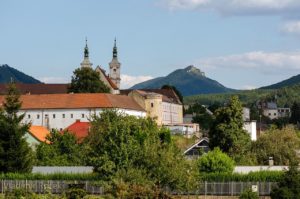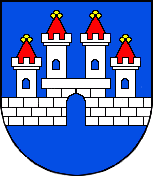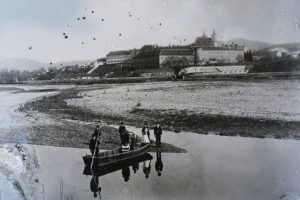Illava

Illava (Ilava, Illau, Eulau) is a town on the left bank of the River Vág, 19 km north-east to Trencsén (Trencin) in the Upper lands/Horná Zem/Felvidék, it is in Slovakia. In medieval times, it was called Léva.
The town got its privileges from the Hungarian King Róbert Károly in 1335. It was called “Villa Lewa” in 1375 but a year later it appeared as “Civitas Lewa” in a document of King Louis the Great. It was King Sigismund of Luxembourg who made it a free royal town in 1410 and gave it the right to hold markets in 1430.

The sources mention the city as “Leva” or “Ilava” during the 15th century. Illava was the place where Lord Rozgonyi Miklós defeated the intruding army of the Czech Hussites in 1431. Szentmiklós Pongrác had its castle built before 1446 on that part of the lands of Trencsén which he had taken from Ulrik of Cille. King Matthias Corvinus gave the castle to his valiant soldier, Magyar Balázs. Later, the castle went to General Kinizsi Pál who wed the only daughter of Magyar Balázs.

The Voivode of Transylvania (later king of Hungary) Szapolyai János permitted the construction of a wooden bridge over the Vág River in 1496. The Catholic church of the town was built between 1470-1488 in the Gothic style. The next owner of the castle was a Croatian, lord Osztrosits who had the castle rebuilt. Soon, the dominium was possessed by the Court and the king sold it to the Breuner family for 80,000 gold Forints.

Later the town belonged to Archbishop Szécheny who invited Trinitarian monks there and began the construction of their monastery in 1692. As Protestantism gained ground, an Evangelic high school was founded in 1560. King Rudolf II permitted the town in 1578 to hold two nationwide markets each year. King Ferdinand II gave more privileges in 1635 which allowed the town to hold more markets.
The church owned a famous beer brewery which was founded in 1598. There were 104 houses in the city in that year. Illava was the home of the famous mathematician of the 17th century, Carponaides György. The first guild of the town was established in 1614, they were the guild of the hat-makers. The Catholic school was founded only in 1684, and its first teacher was Sartorius János.

The town suffered two great fires, in 1622 and 1695. As for the monks, the Trinitarian Order’s role was to pay the ransom of prisoners of war, and two years after 1692 they could have their own monastery in the upper part of the castle. They were there until 1725. We know of 67 families in the town who paid taxes in 1720.
You would not want to visit the castle from the inside because it has been functioning as a prison since 1856. Also, there are very few pictures of it for the same reason.

Dear Readers, I can only make this content available through small donations or by selling my books or T-shirts:
Please, feel free to support me with a coffee here:
You can check out my books "33 Castles, Battles, Legends" and "The Ring of Kékkő Castle" on Amazon or Draft2Digital, they are available in hardcover, paperback, or ebook: https://www.amazon.com/dp/198020490X or at https://books2read.com/b/boYd81
 My work can also be followed and supported on Patreon: Become a Patron!http://Become a Patron!
My work can also be followed and supported on Patreon: Become a Patron!http://Become a Patron!


https://hungarianottomanwars.myspreadshop.com/all














